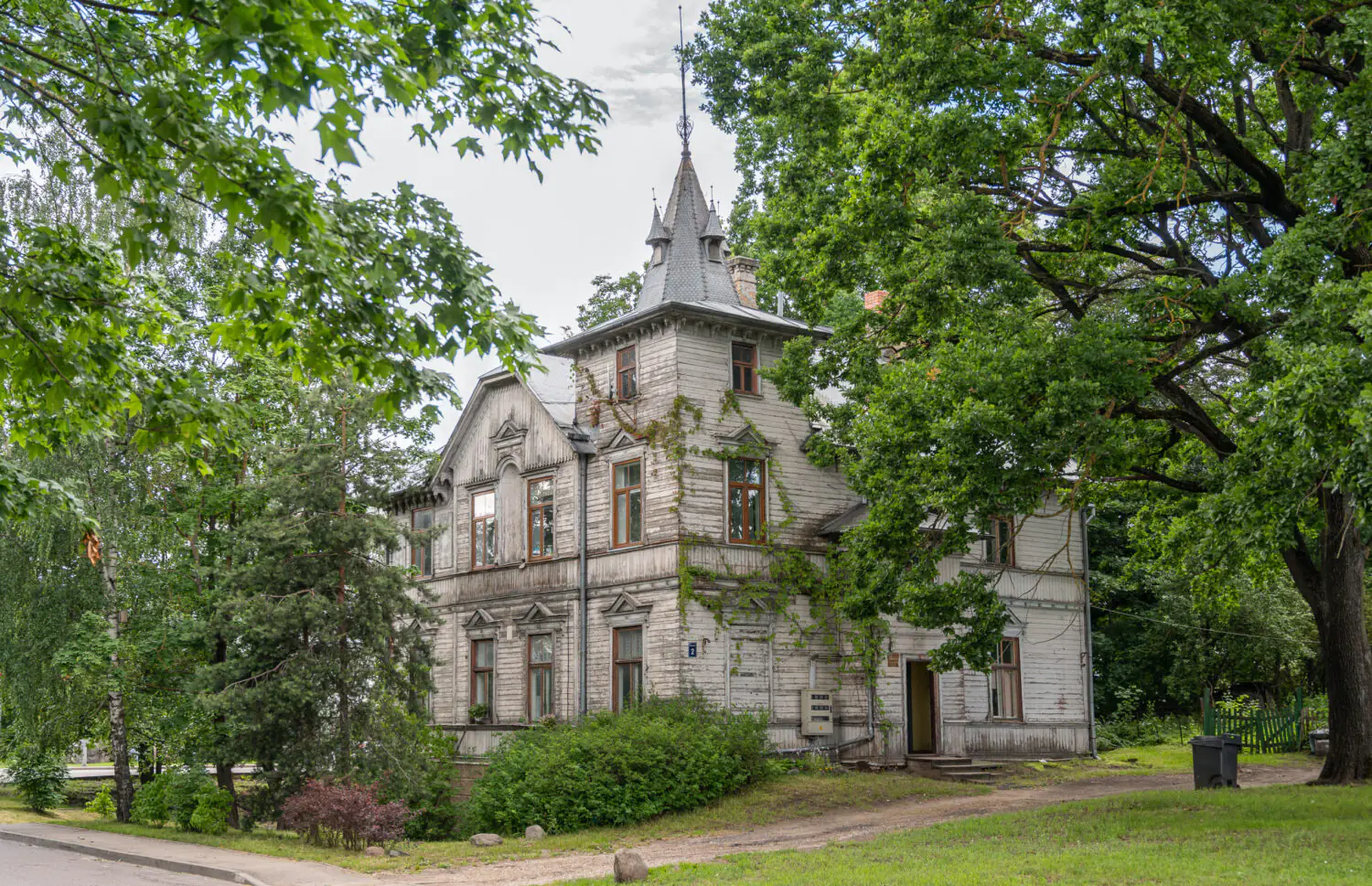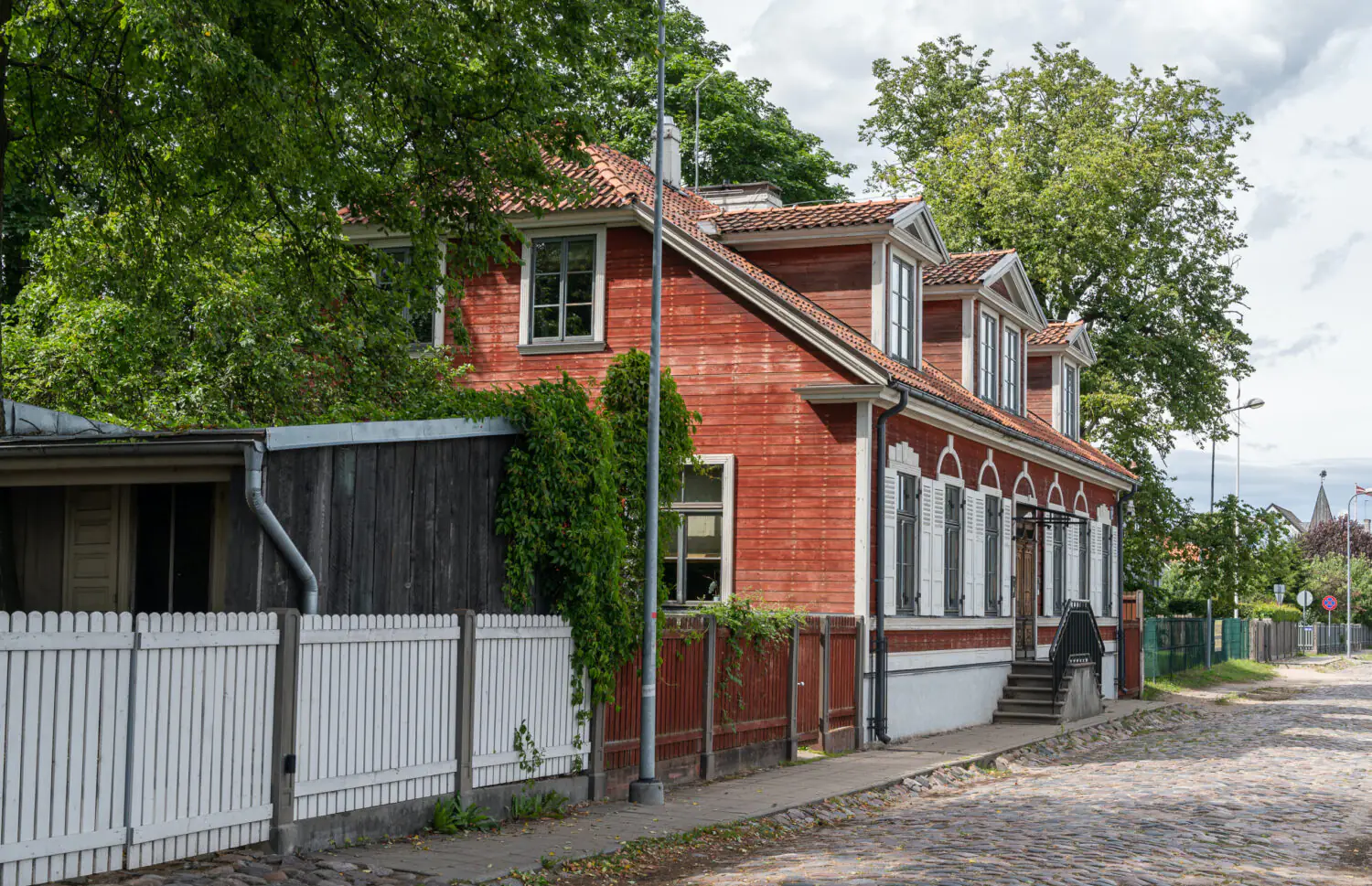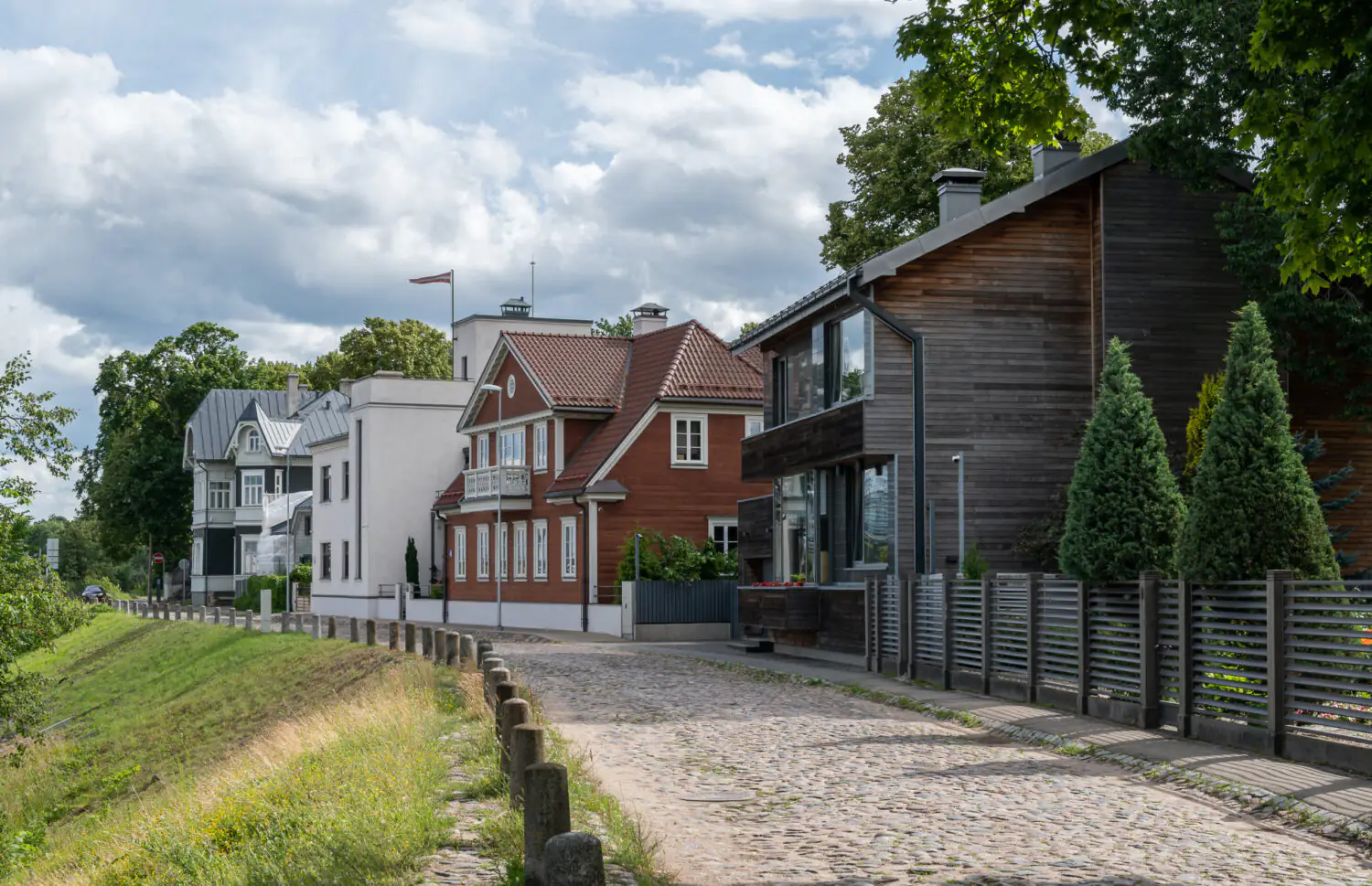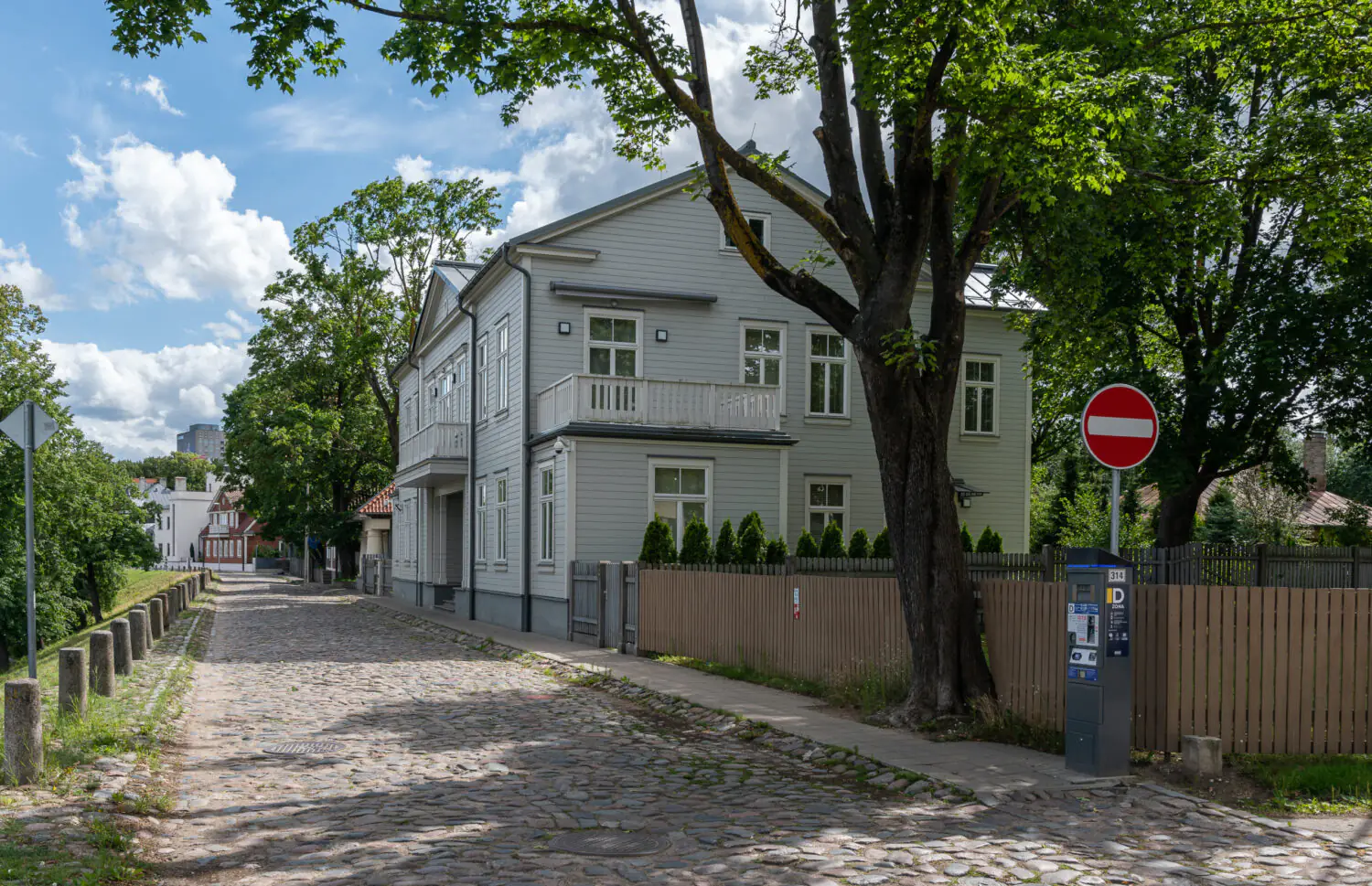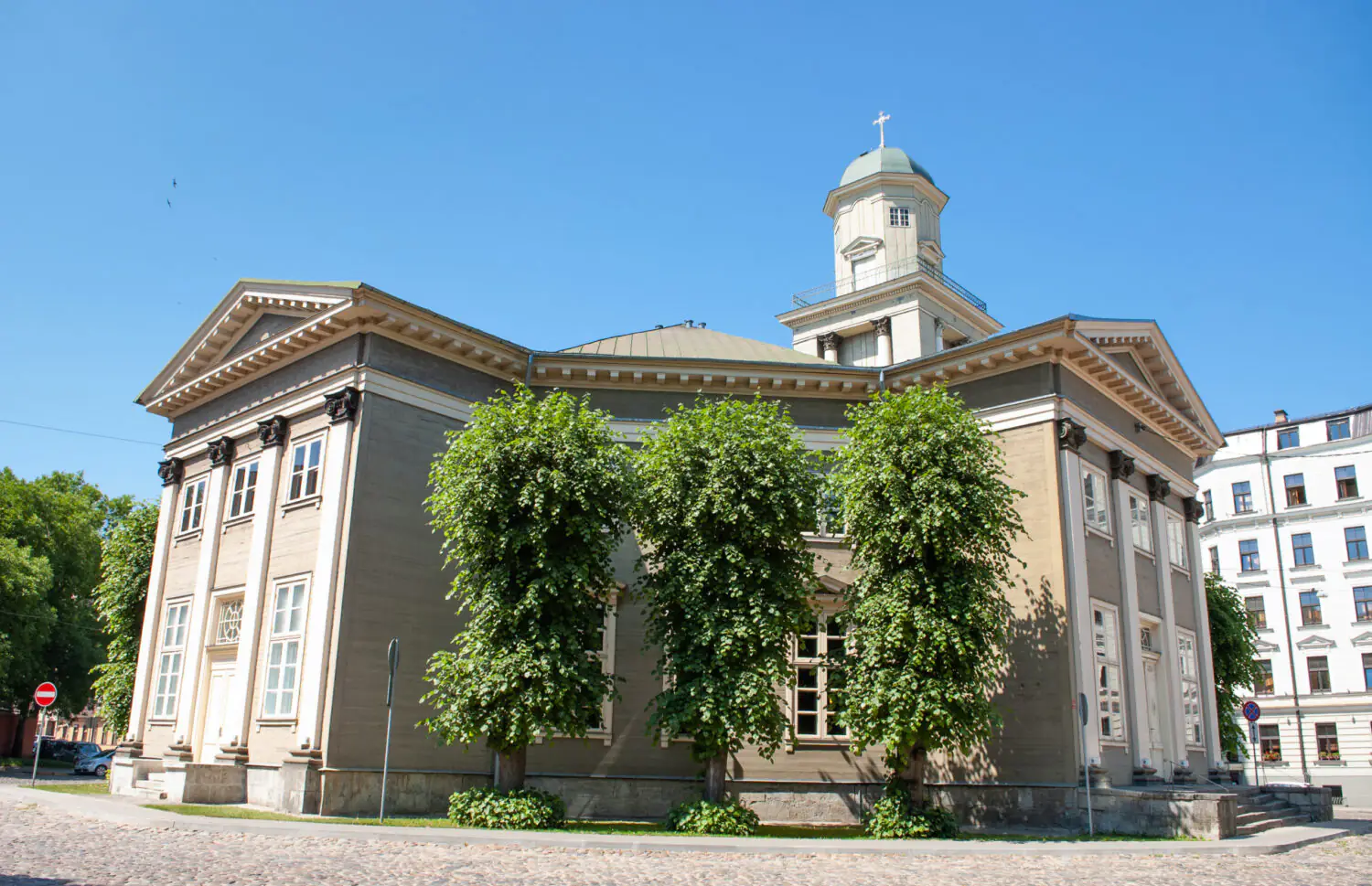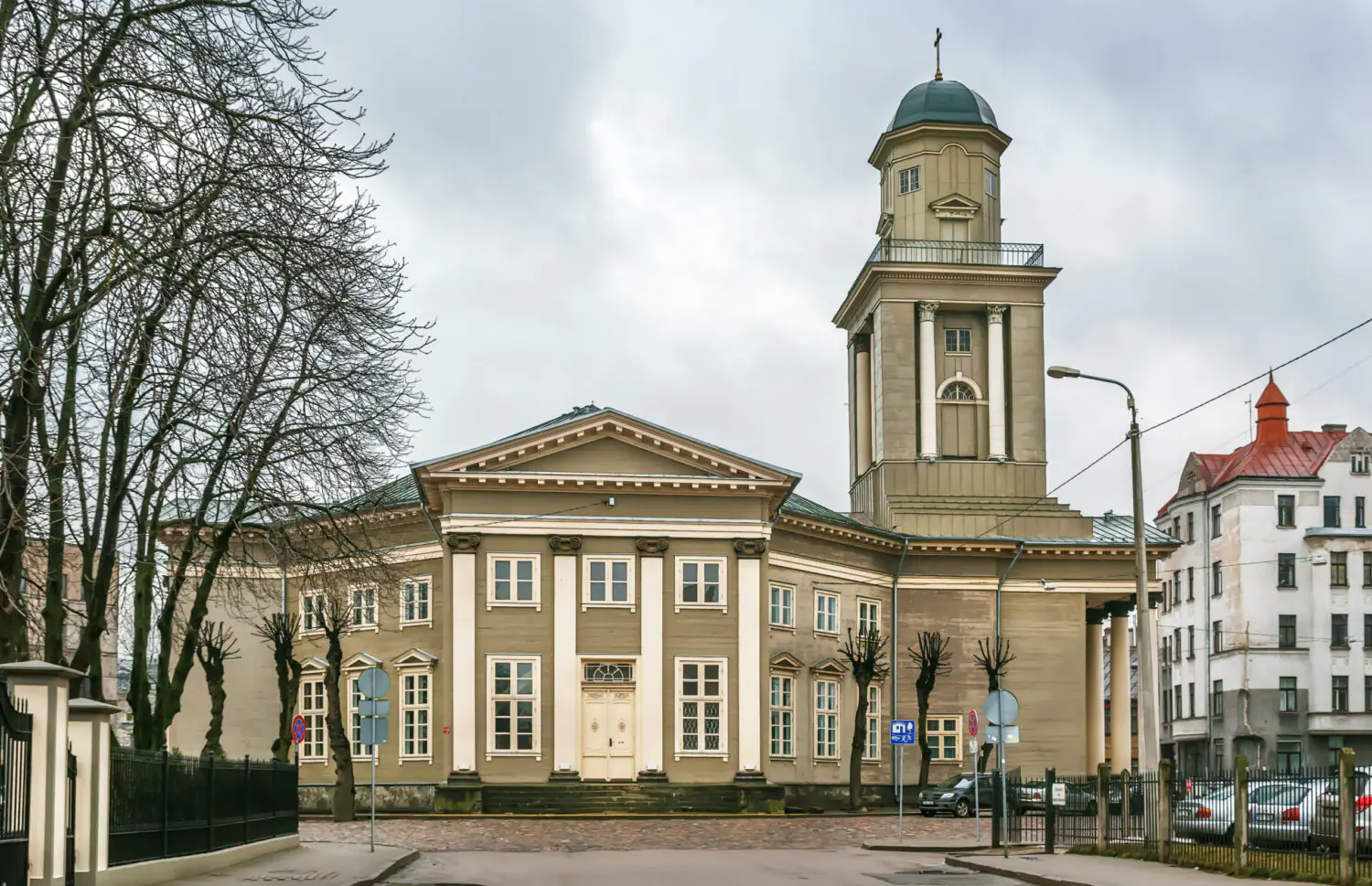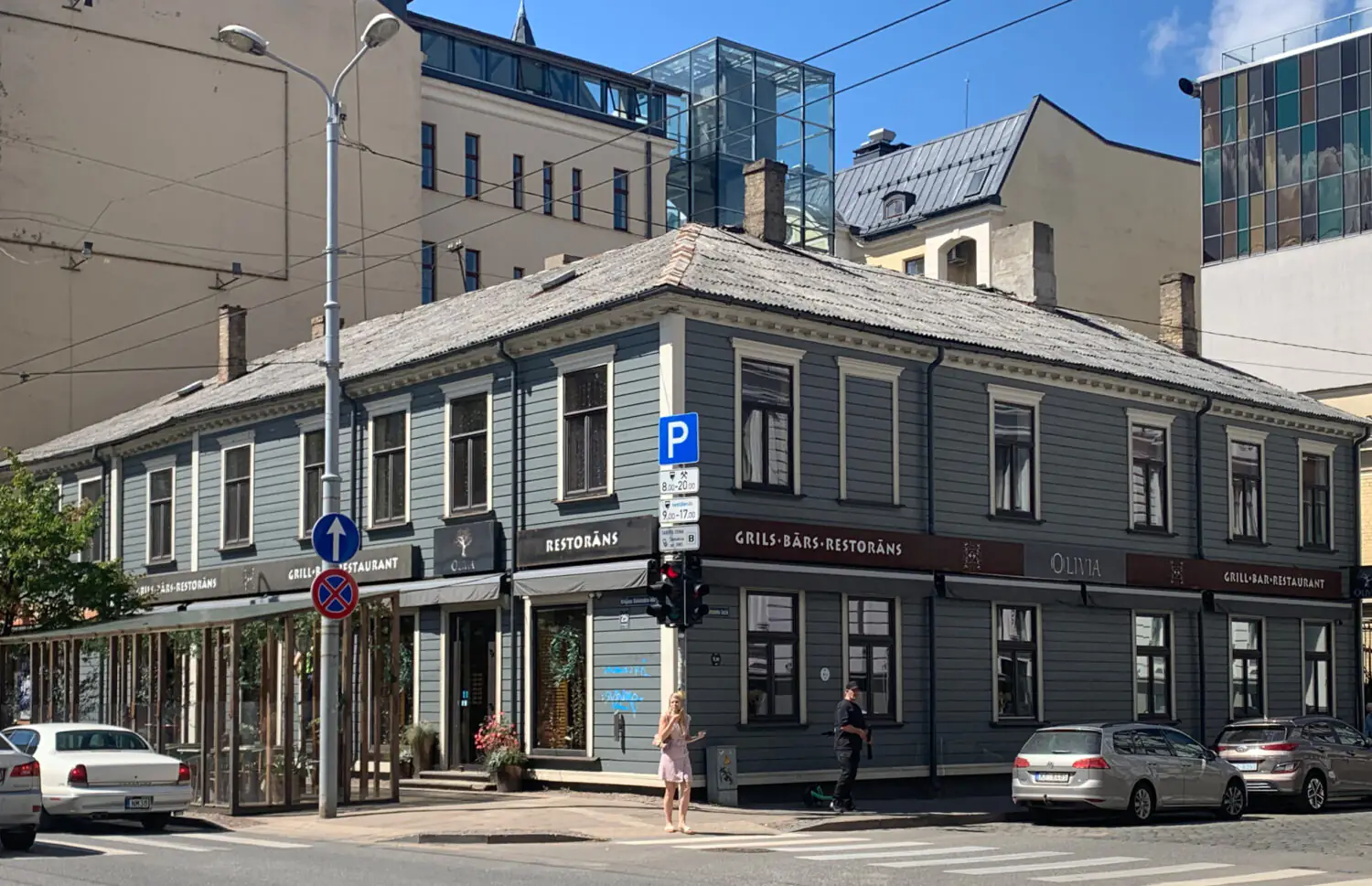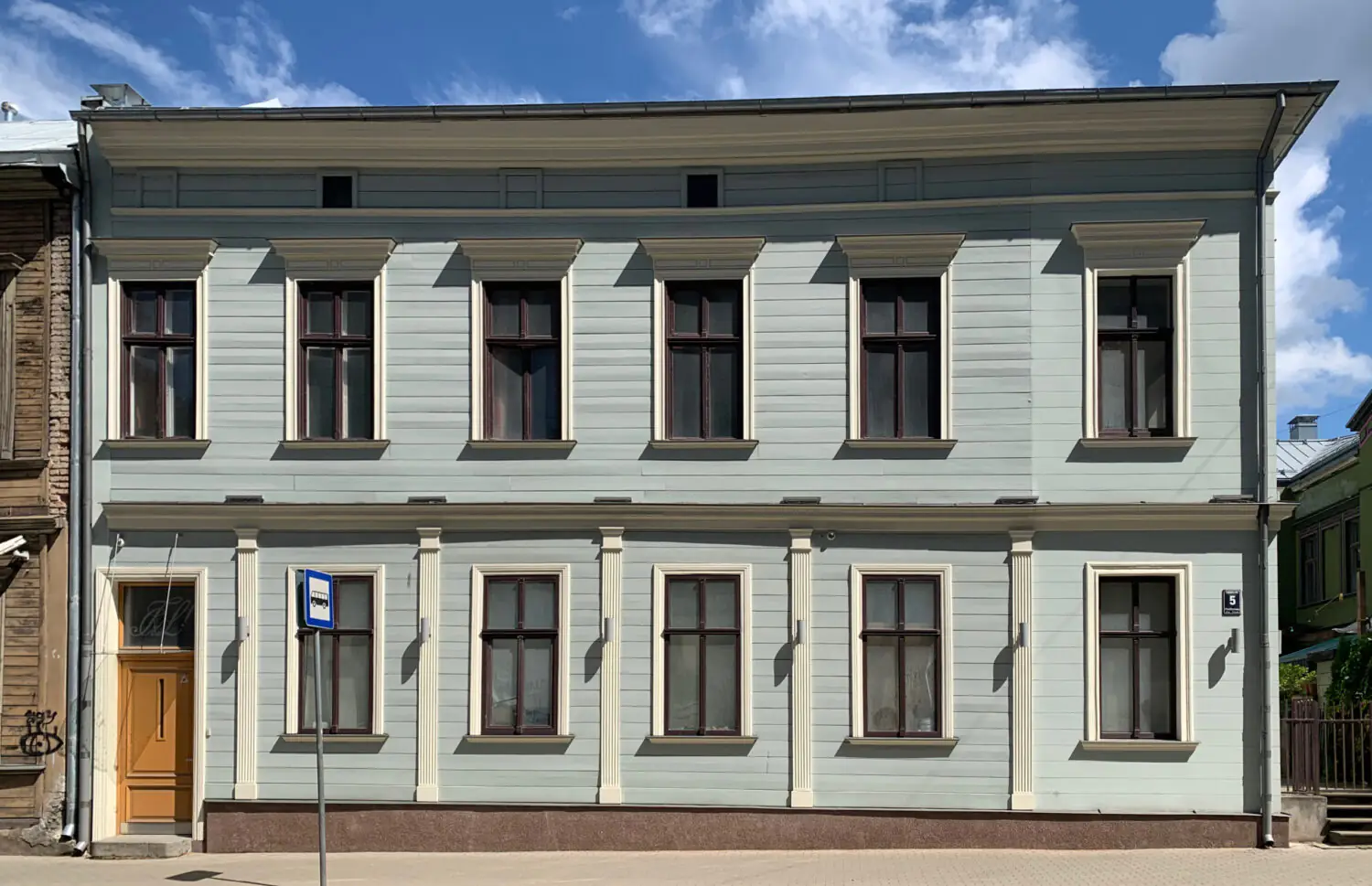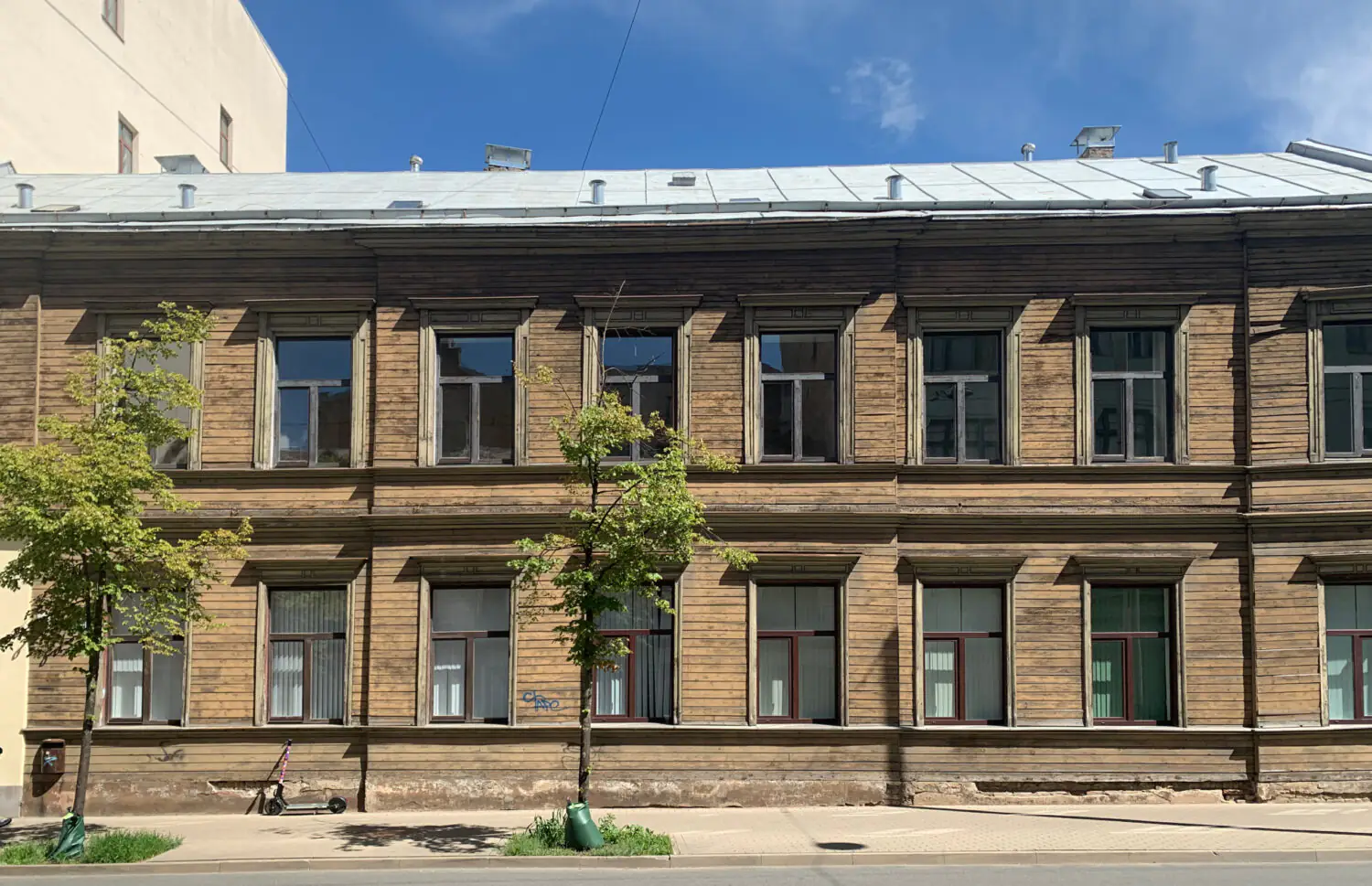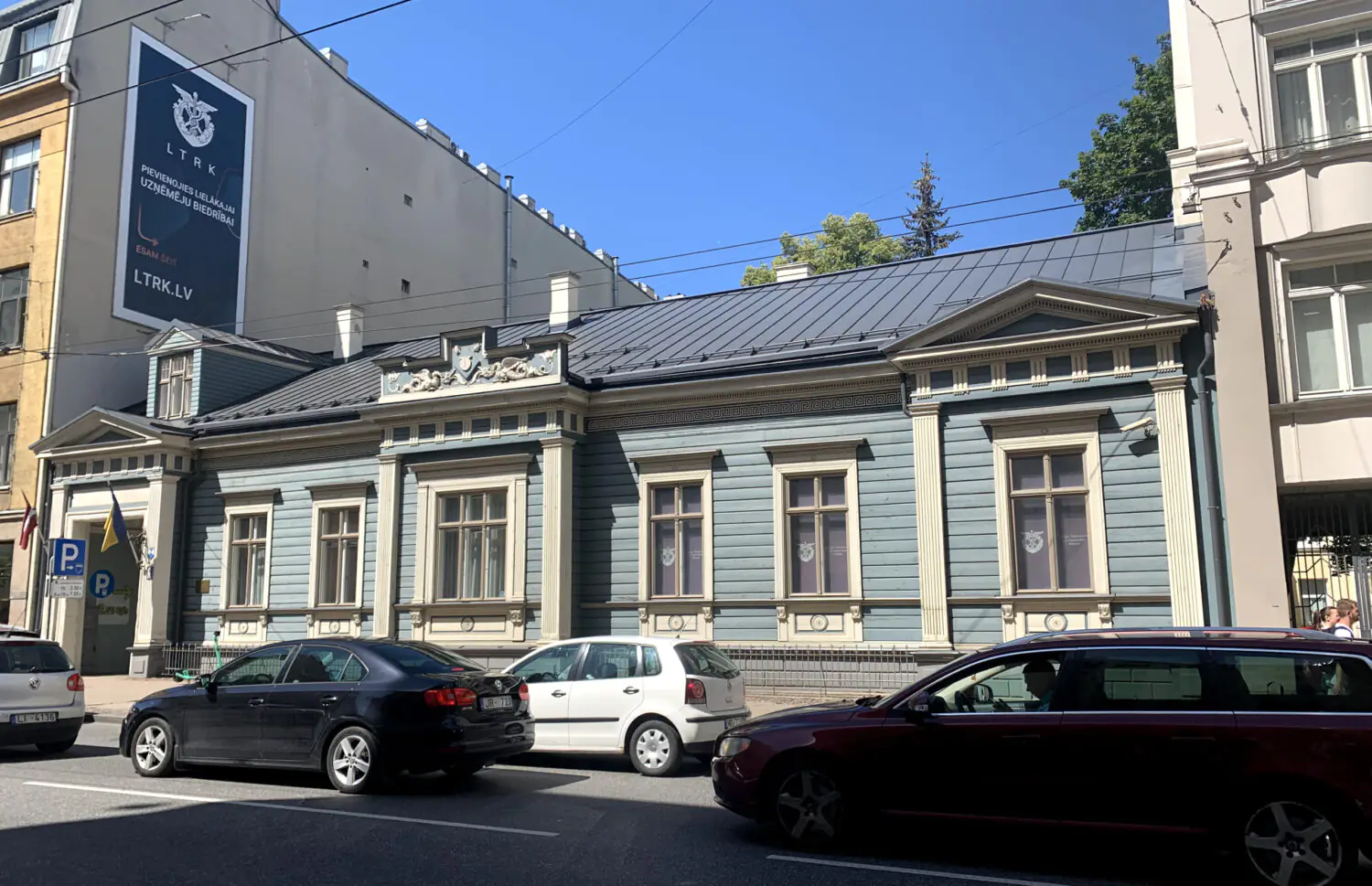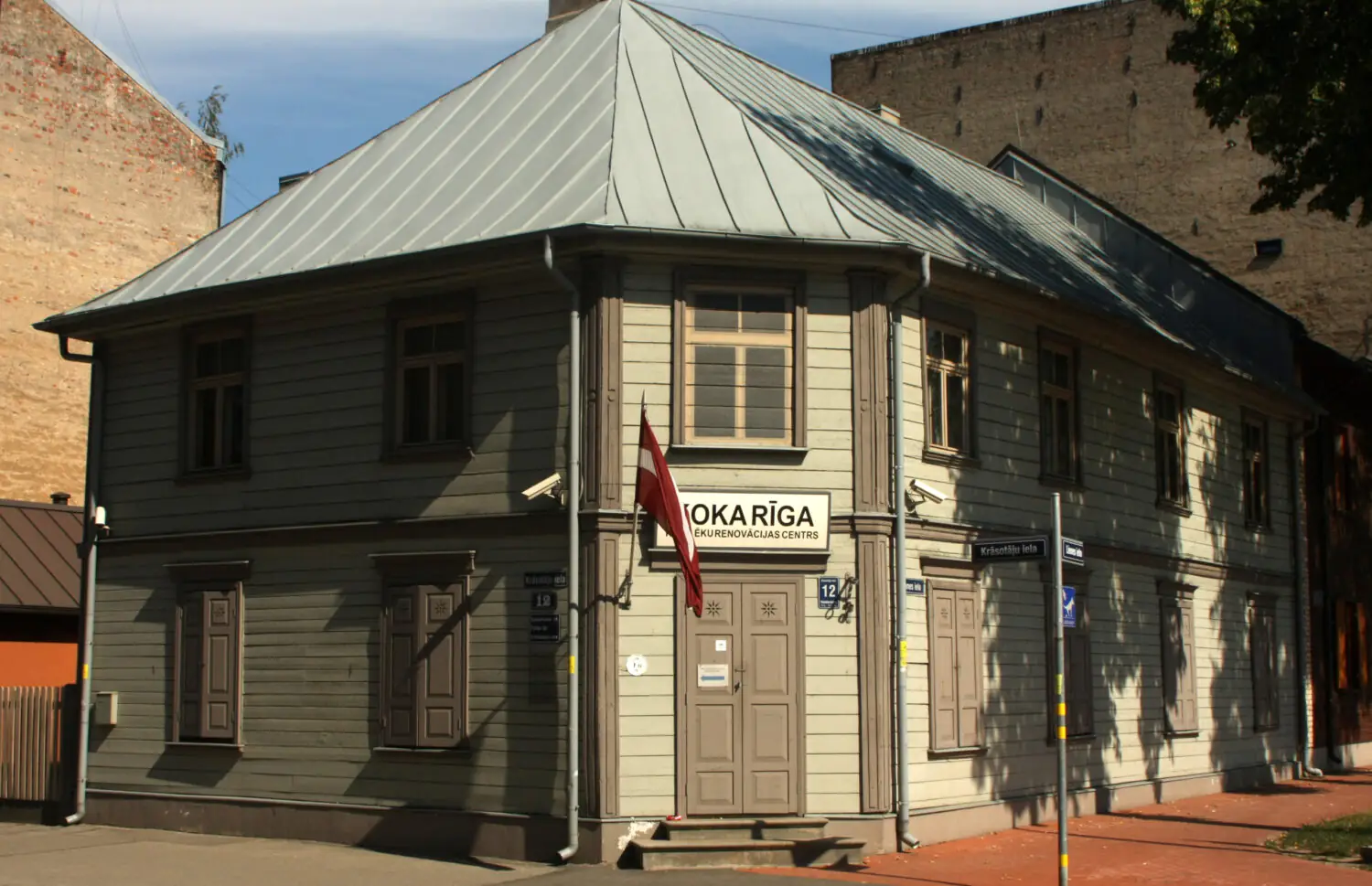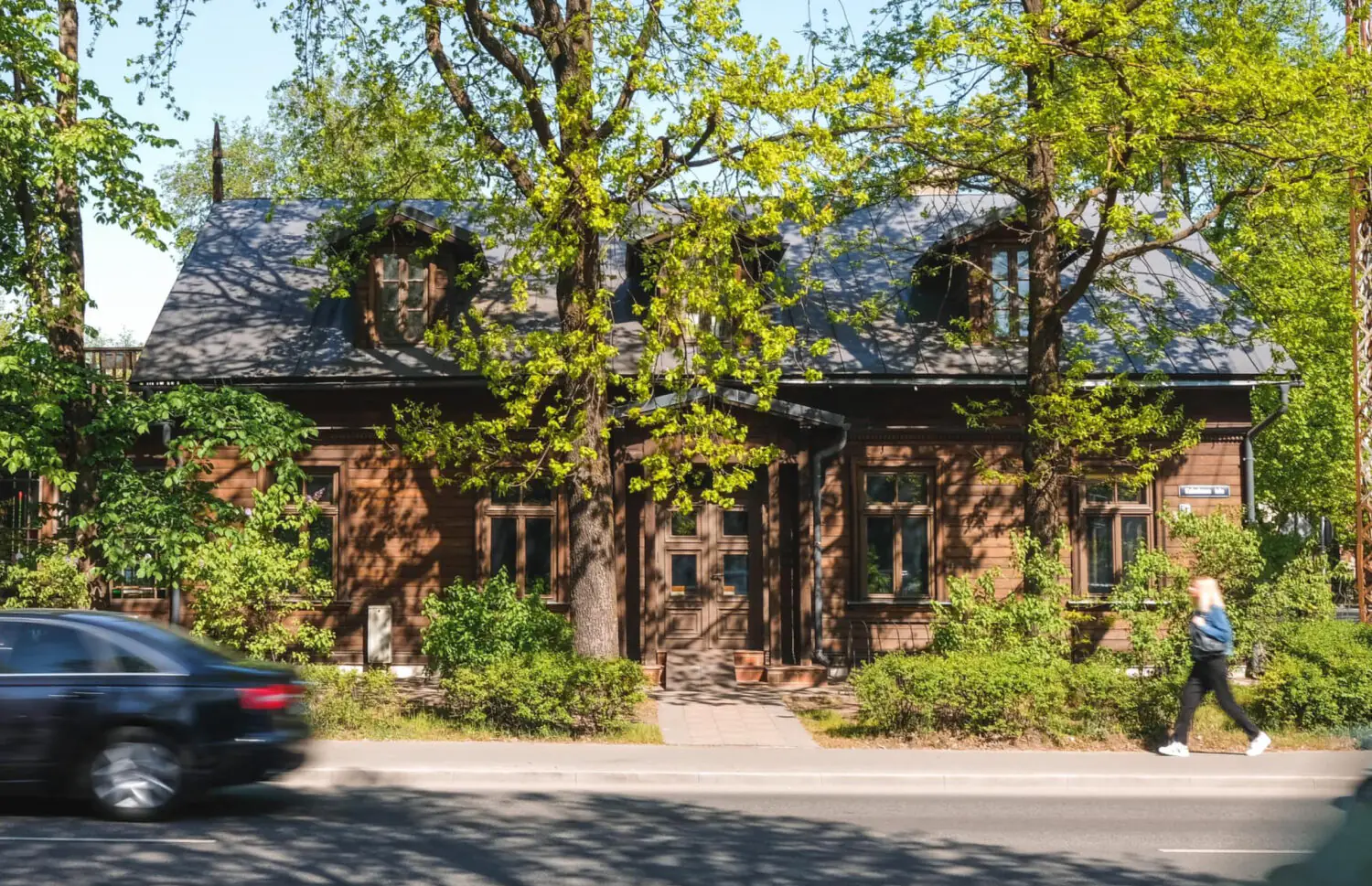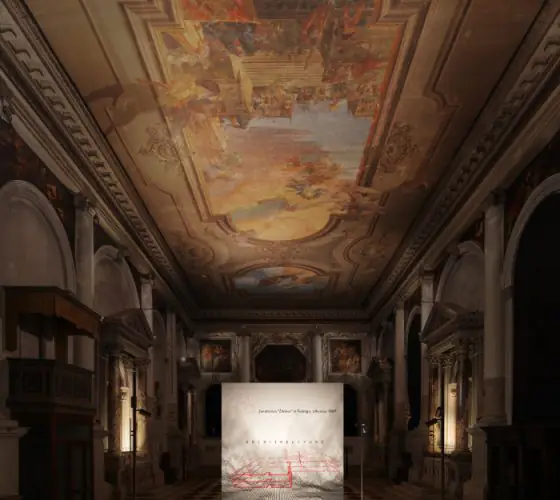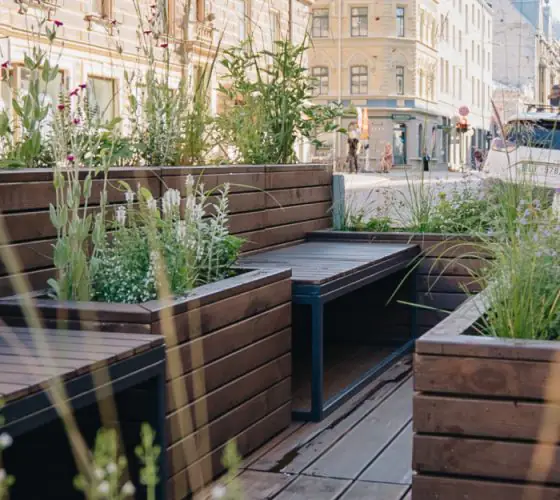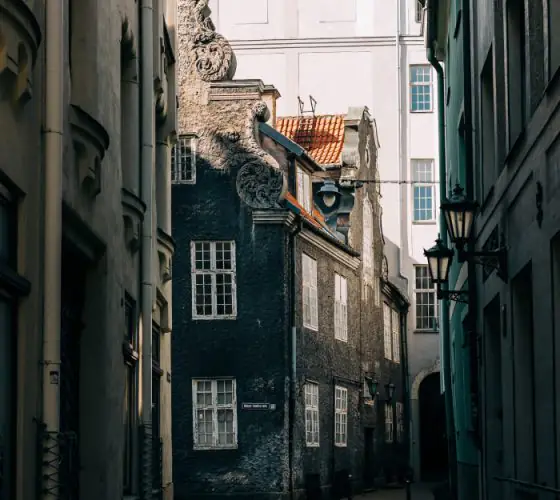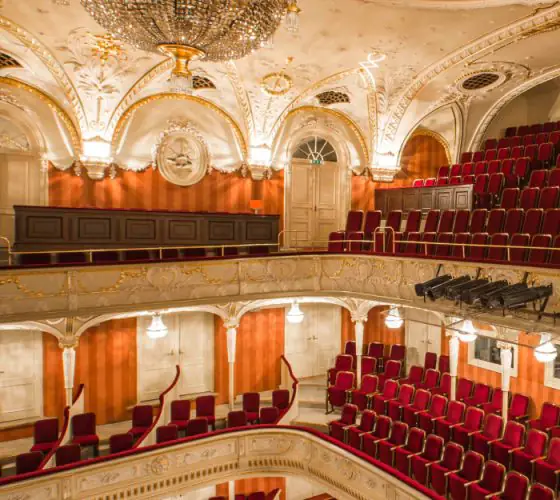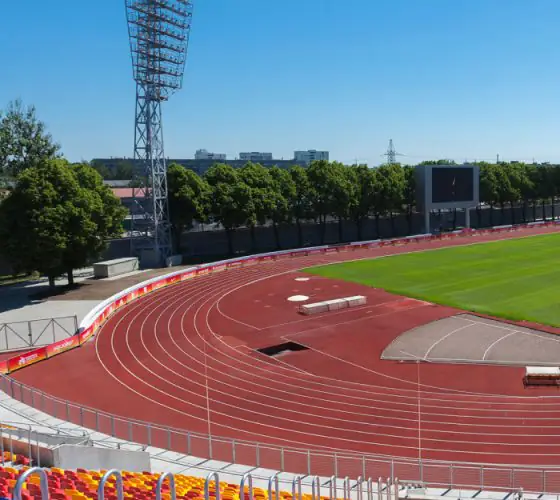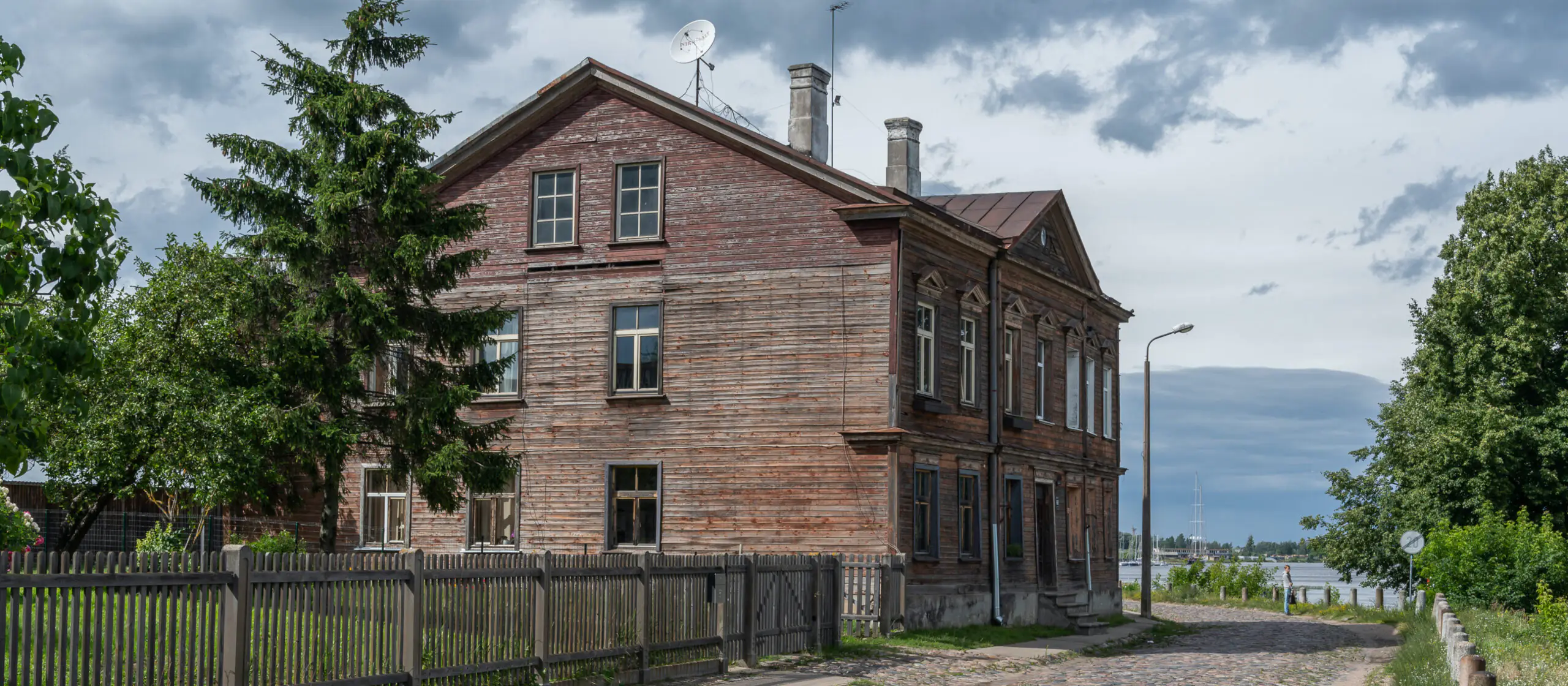
stock.adobe.com
Compared to other European countries, Latvia is one of the richest in terms of preserved wooden architecture. This heritage, along with medieval architecture and Art Nouveau, helped the center of Riga get on the UNESCO list.
“If the quaint Art Nouveau style is Riga’s salt of the earth, then what are its little wooden houses? Maybe it’s the pepper that spices up the space, gives a glimpse of the city and compares different principles of urban environment creation.”
Pēteris Blums, an architect and leading researcher of wooden architecture in Latvia
Timber, which has almost disappeared from mass construction, was actively used in European countries until the 18th century. It was an accessible and convenient material, from which a building could be erected rather quickly for many years. In Latvia, rich in woods, timber construction was especially active and popular up to the Second World War..
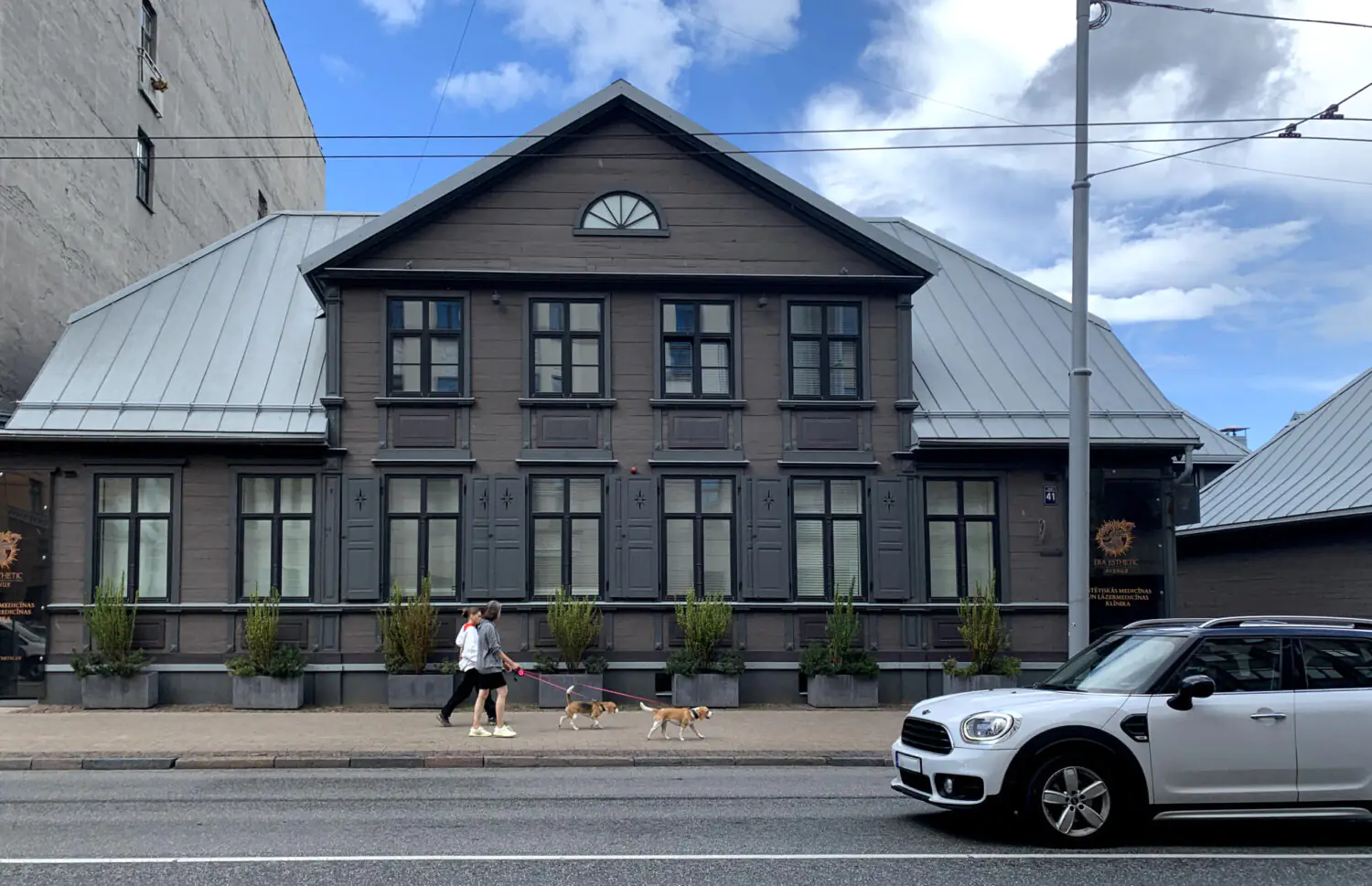
Today, if you walk through the centre of Riga, you’ll come across two-storey wooden buildings preserved amidst the tall Art Nouveau-style stone houses. Most of the wooden buildings, however, are concentrated on the left bank of the Daugava, where fishing villages and fishermen used to flourish. To delve into Latvia’s wooden architecture without leaving Riga, head to the left bank of the river, Pārdaugava, via Kipsala Island, then return to the centre to find wooden houses lurking there too between tall buildings.
Ķīpsala
Once a poor fisherman’s island, Kipsala has become a gentrified and trendy 200-hectare district where 18th- and 19th-century wooden homes rub shoulders with modern villas.
Walk along Balasta dambis and admire the restored one- and two-story colorful houses along it (No. 52, 58, 60a, 66a). Then go to Ogļu iela and admire buildings No. 6 and 8 with tiled roofs and coloured frames.
Take a walk over to Vanshu Bridge for a great view of downtown Riga and the promenade. To complete your acquaintance with Kipsala and its wooden heritage, take a look at Zvejnieku Street, Building No. 5a. This large wooden building from 1909 in the style of National Romanticism (an important movement within Art Nouveau) was designed by one of Latvia’s greatest architects, Eižens Laube.
Pardaugava: Kalnciems and Melncila
Many wooden houses have been preserved on the left bank of the Daugava, so you can simply walk around the streets without a particular plan, or you can walk along Melnsila iela, which has many nice wooden houses in good condition, take a look at Melnsila iela No. 10, 11, 13 and 15.
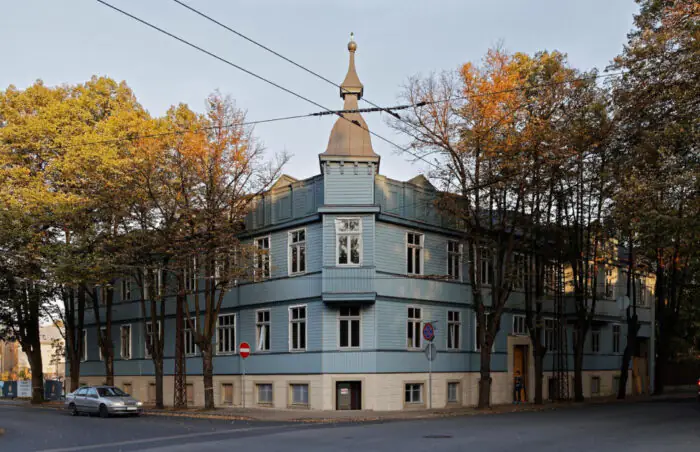
adreses.jautajums.lv
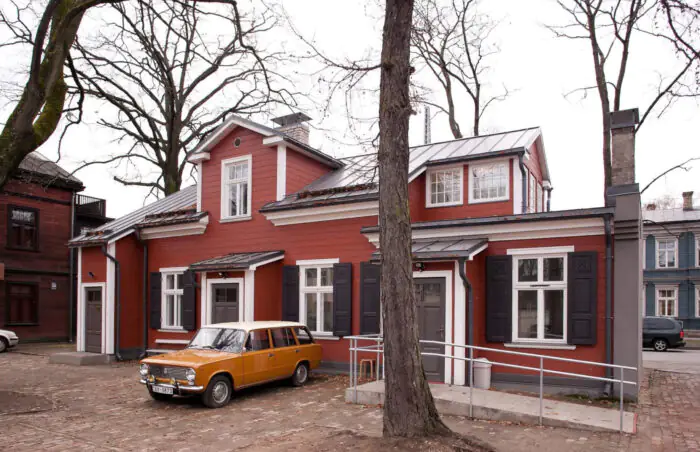
obzor.city
After walking along Melnsila iela, turn off onto Kalnciema iela 35, where you’ll find the trendy Kalnciems Quarter, Riga’s wooden architecture “reserve” with 23 restored 18th- and 19th-century colorful houses, lots of cafes and active social life. Craft fairs, theme festivals, farmers’ markets, workshops for children and adults, and many other events provide a fascinating insight into the region’s culture as you explore 100-year-old wooden buildings.
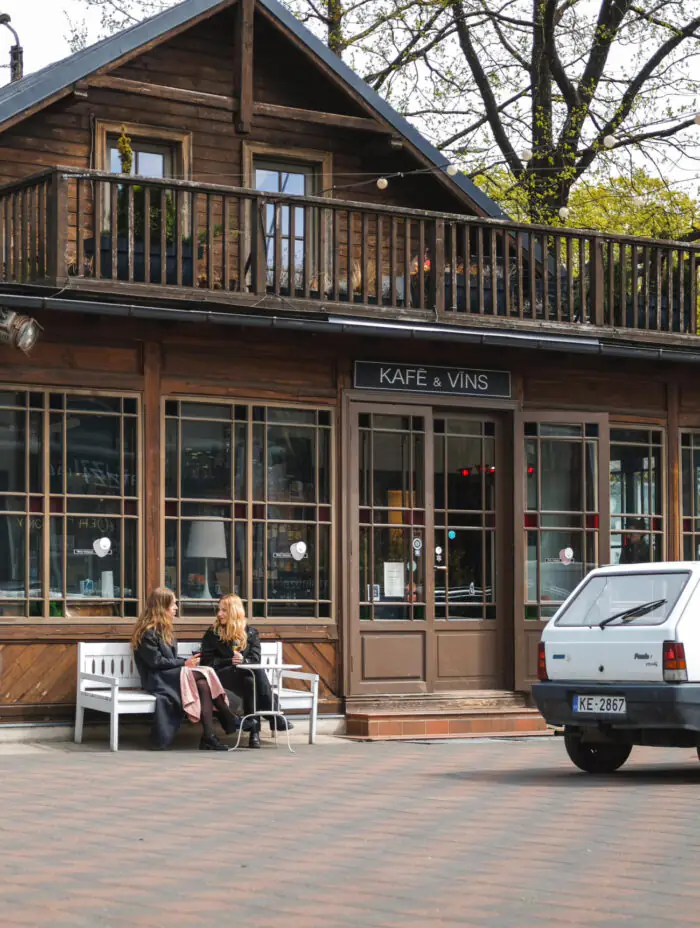
facebook.com/Kalnciemaiela
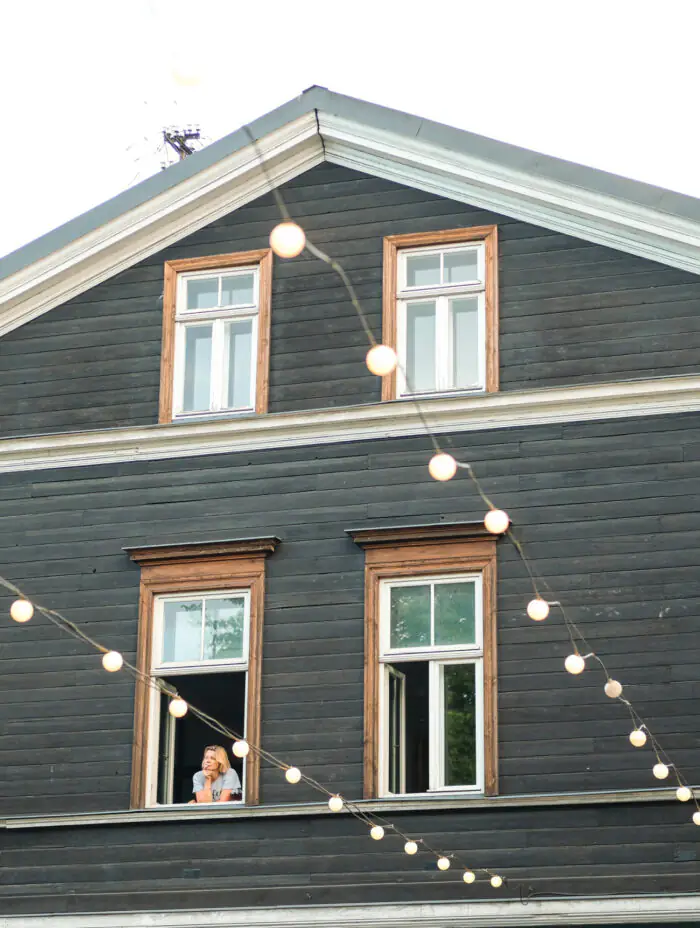
facebook.com/Kalnciemaiela

facebook.com/Kalnciemaiela
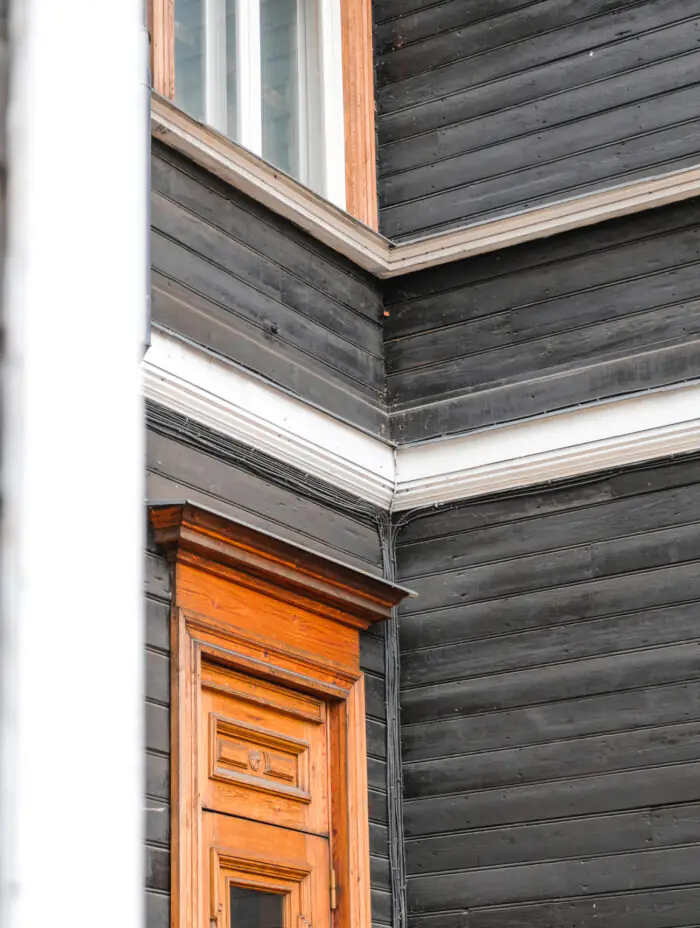
facebook.com/Kalnciemaiela
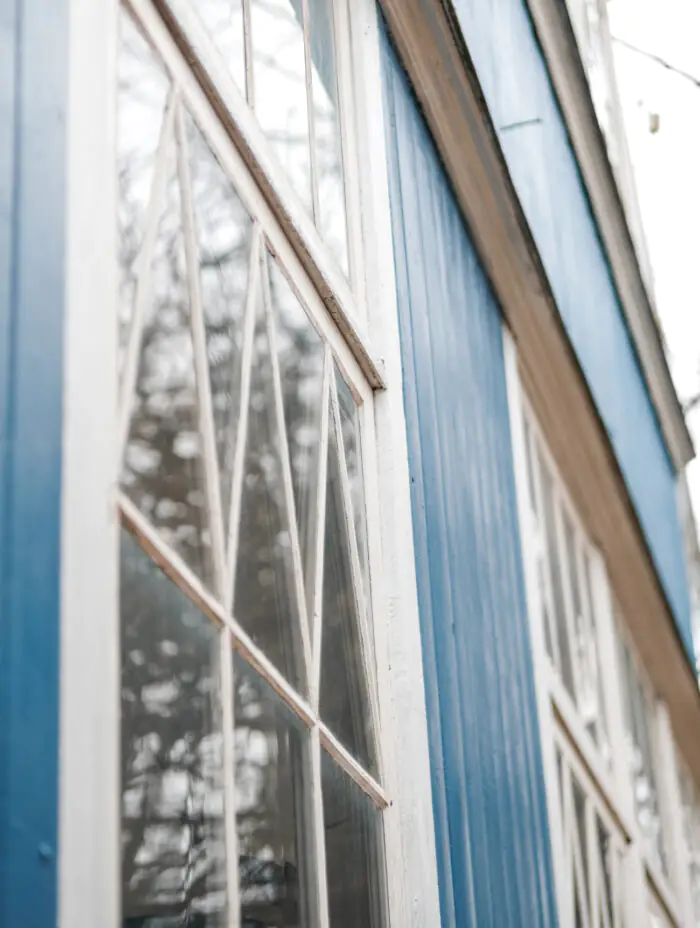
facebook.com/Kalnciemaiela
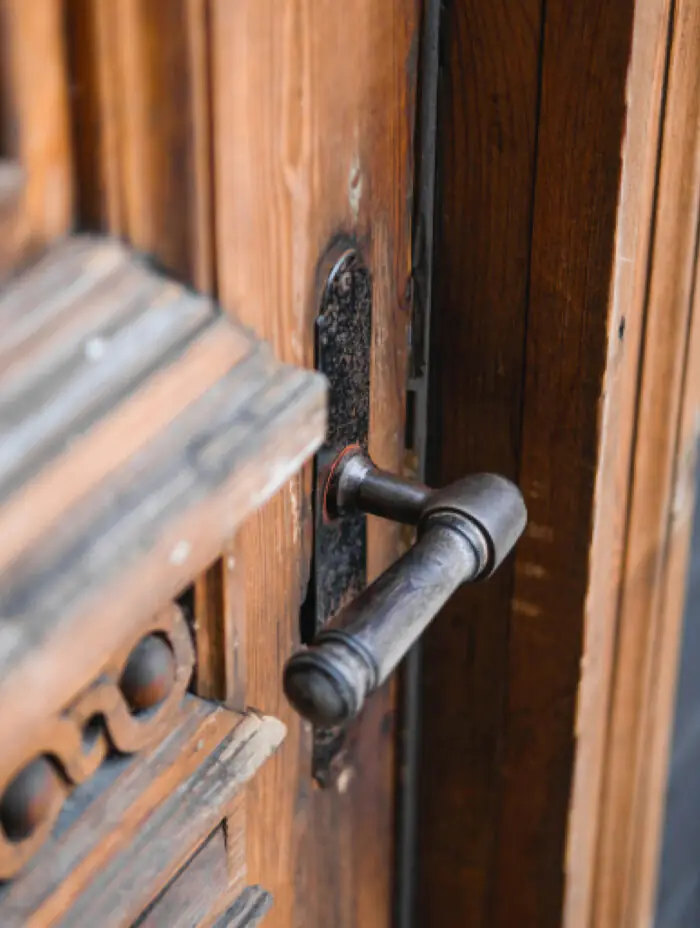
facebook.com/Kalnciemaiela
The Right Bank: the Moscow Neighborhood and Center
Although most wooden buildings are concentrated on the left bank of the Daugava and Kipsala Island, a few interesting examples can be found on the right bank as well, especially in the Maskavas District.
For instance, the Riga Jesus Lutheran Church (Elijas iela 18) deserves special attention. Originally built in the 17th century, the church has been destroyed and rebuilt many times. Today, we can see the 1822 version with a 37-meter bell tower, and it is the largest wooden building in Riga. It’s also interesting to see another wooden church in Riga, the bright yellow Annunciation of the Virgin Mary Church (Gogoļa iela 9) in the same Moscow district.
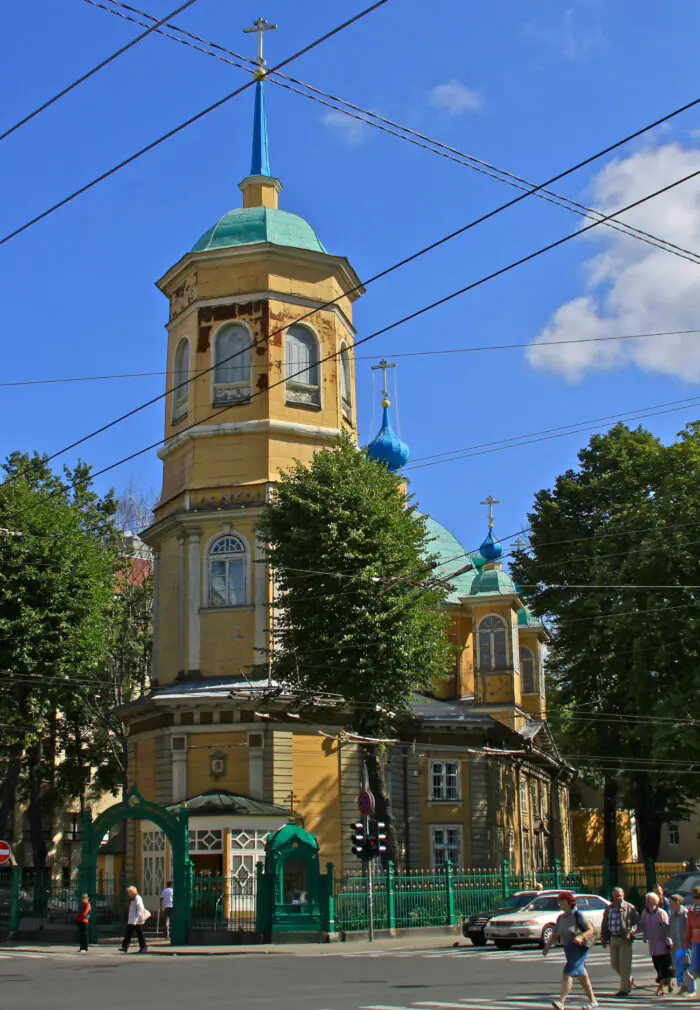
wikipedia.org
Take a stroll downtown to see how the wooden architecture blends with the prevailing Art Nouveau style of the city’s streets. On one of the most beautiful streets in the city, Elizabetes, for example, you can find some neat wooden buildings. Take a look at the red wooden mansion at Elizabetes iela 83a or the snow-white building at Elizabetes iela 27.

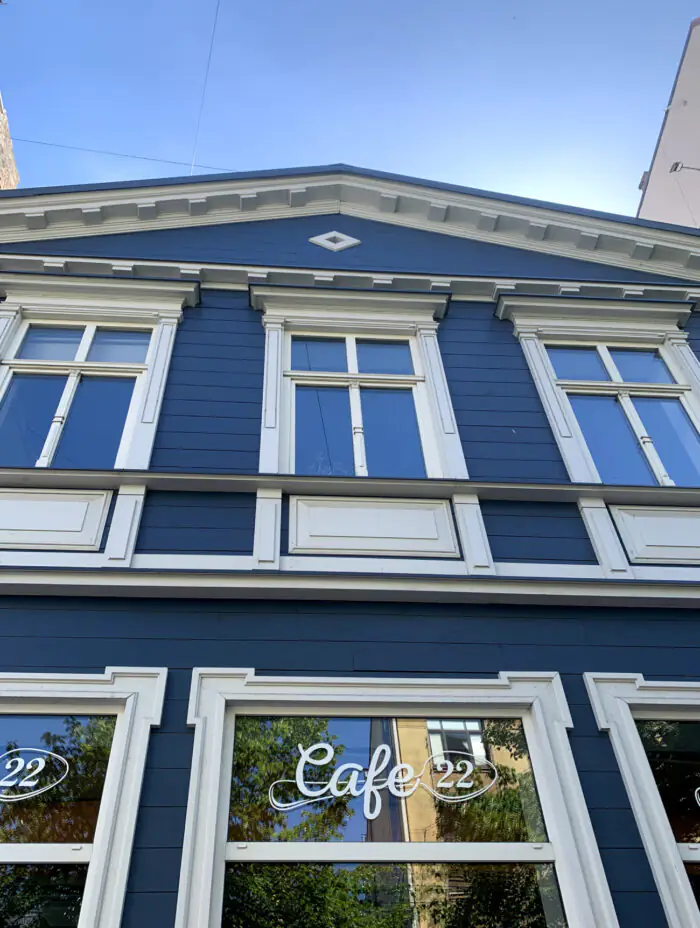
You can walk along the main street Crištijan Valdemāra iela and find several wooden farmsteads hiding among the Art Nouveau buildings at Krišjāņa Valdemāra iela 25 and Krišjāņa Valdemāra iela 14. Walk up a little further up the street and you’ll find two neat 19th century blue houses facing each other at Krišjāņa Valdemāra iela 22 and Krišjāņa Valdemāra iela 35
Grizinkalns
A formerly working-class quarter of Riga, where many two-storey wooden houses were built at the turn of the 19th and 20th centuries, Grīziņkalns today is an interesting mix of preserved wooden heritage, art nouveau and modern architecture. Once you enter the area, it’s easy to get caught up in this unorthodox Riga character.
Take a stroll through the streets: Lauku (Lauku iela 8), Artilērijas (Artilērijas iela 36, Artilērijas iela 43, Artilērijas iela 60, Artilērijas iela 62 and Artilērijas iela 67), Alauksta (Alauksta iela 1 and Alauksta iela 19), Laboratorijas (Laboratorijas iela 13 and Laboratorijas iela 22) and take a look at the local two-storey wooden houses: you’ll notice that they’re much less decorative, all somewhat similar, and it’s obvious that they’re not a variety of exquisite 19th-century wooden manor houses like those in Kalnciems, or small and original fishermen’s houses like those in Kipsala, but a mass development of the time.
Take a walk down Pernavas Street, Zvaigžnia or Jana Asara Street and you’ll discover an interesting mix of wooden semi-detached houses and Art Nouveau rustic stone buildings in this part of town. Grīziņkalns is also home to Koka Riga, a center for research on Riga’s wooden architectural heritage, where you can take a workshop, get help with restoration work, or attend a lecture.
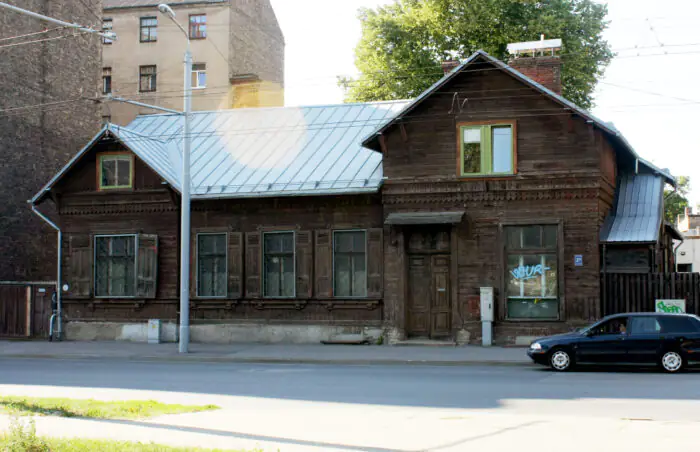
delfi.lv
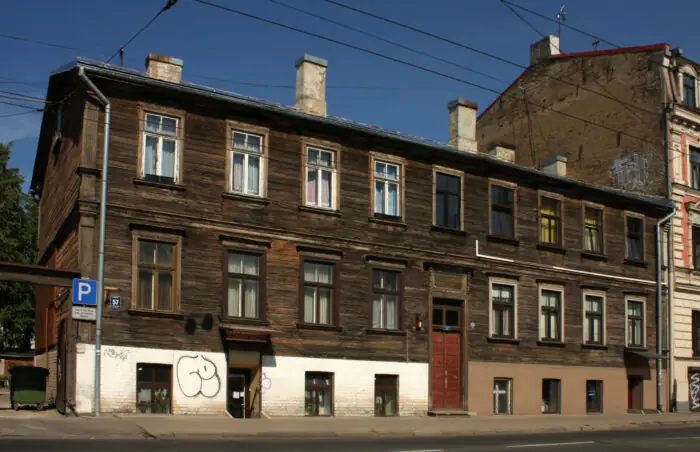
delfi.lv
Read our other articles where we tell in more detail about the most Notable buildings of Riga, Art Nouveau buildings and Soviet architectural heritage.
To continue exploring Latvia’s wooden architecture, you can head to Jūrmala and walk past local manors and houses with colorful facades, figured frames and carvings. Some of these have already been described in another article.


